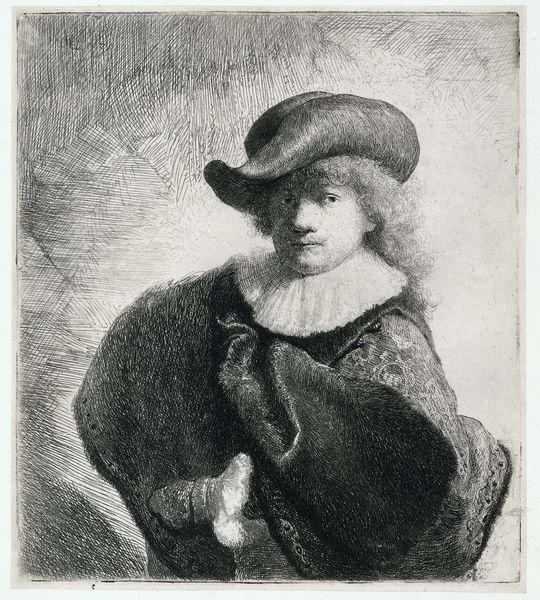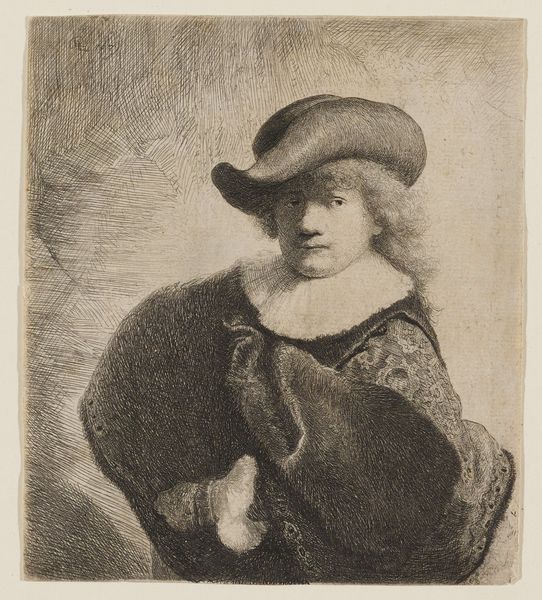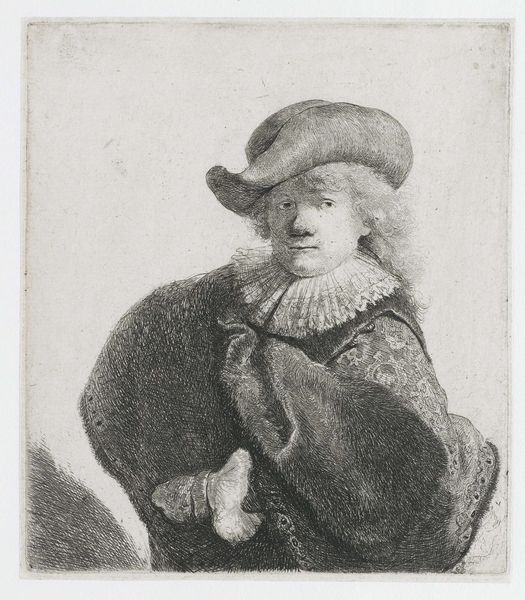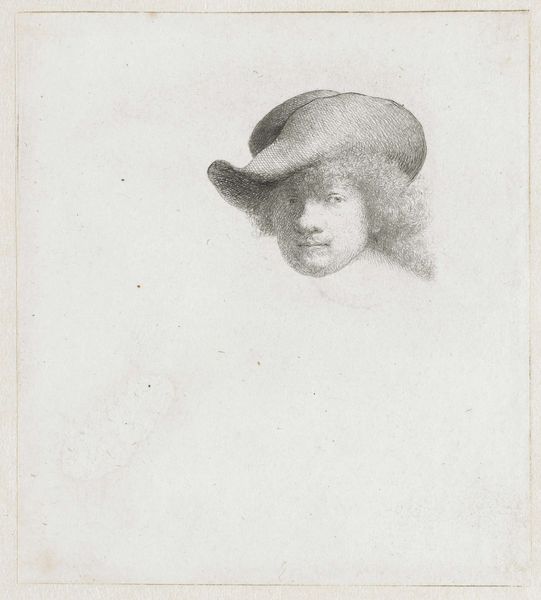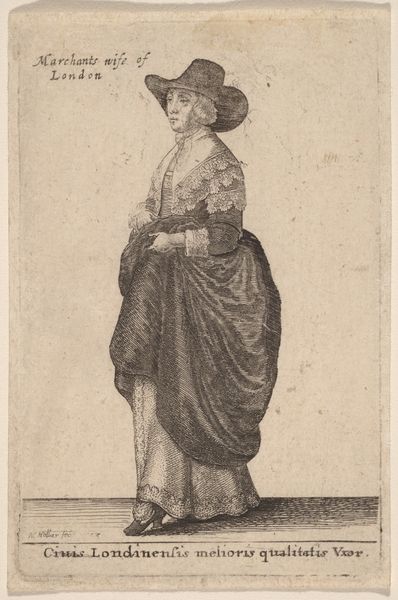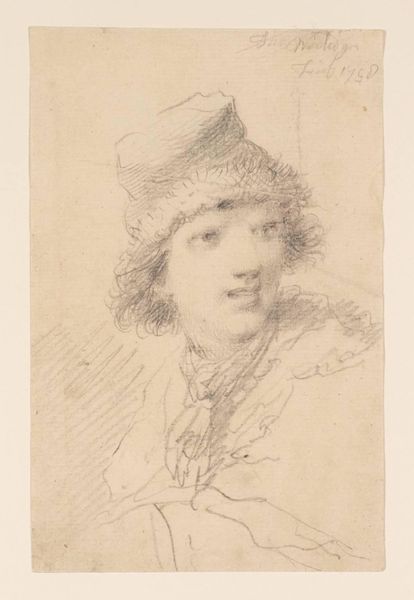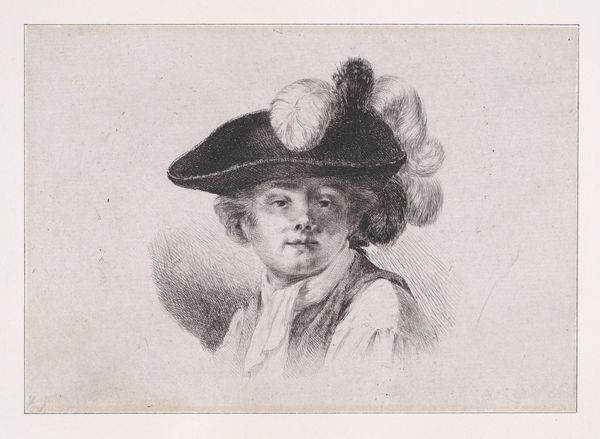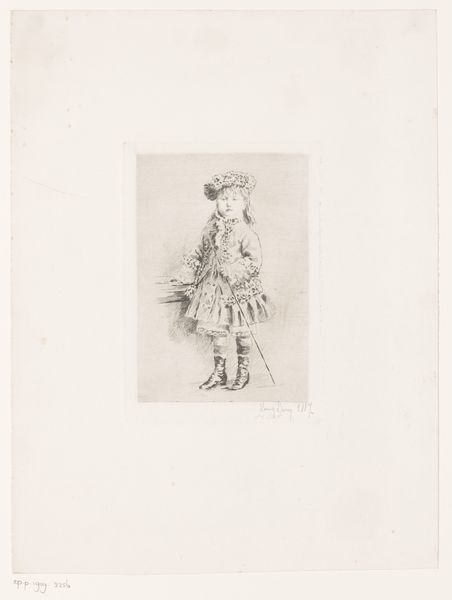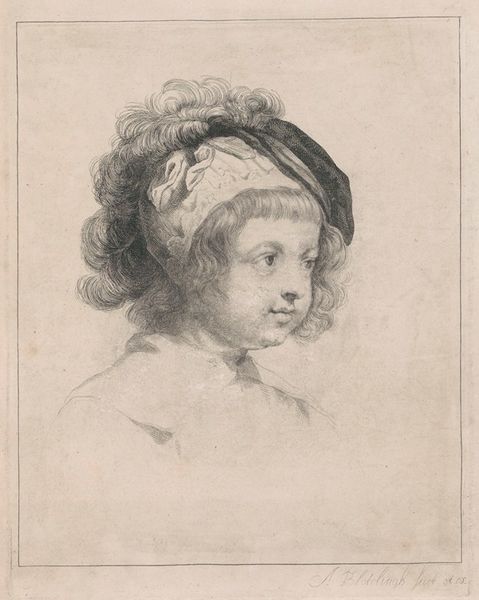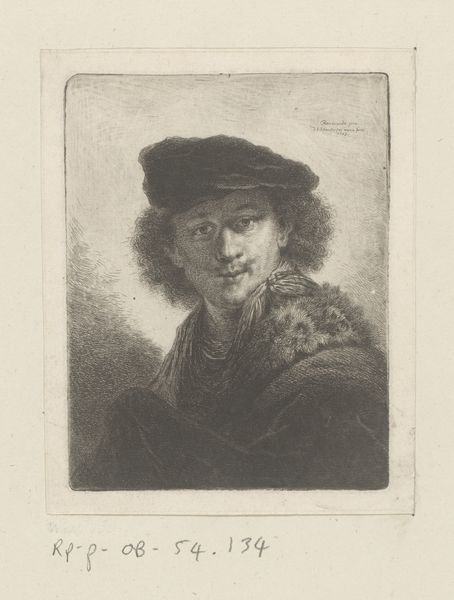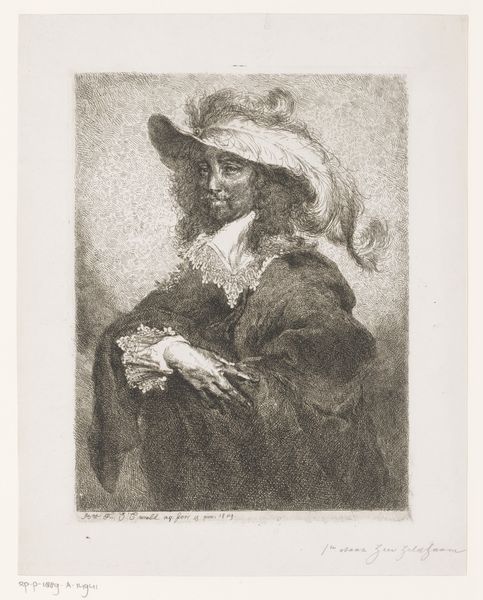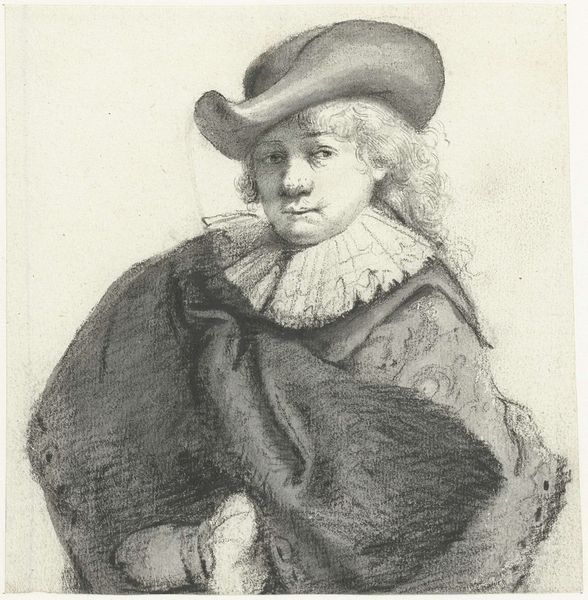
print, etching
#
portrait
#
self-portrait
#
baroque
#
dutch-golden-age
# print
#
etching
#
figuration
Dimensions: height 148 mm, width 131 mm
Copyright: Rijks Museum: Open Domain
Editor: This is Rembrandt van Rijn’s "Self-portrait in a Soft Hat and Patterned Cloak," from 1631. It’s an etching, which is fascinating. It feels so intimate, like a casual glimpse into the artist’s life. What strikes you about this work? Curator: It’s interesting you describe it as intimate, because Rembrandt's self-portraits, especially etchings like this one, played a crucial role in shaping his public image and career. Consider the context: printmaking allowed for wider dissemination. How do you think this accessibility affected his reputation and the perception of artists at the time? Editor: That’s a good point! It definitely broadens his reach, making him less reliant on wealthy patrons and maybe even more in control of his artistic narrative? Curator: Exactly! And note the theatrical costuming and soft hat, how might this resonate with the burgeoning middle class, who sought aspirational imagery but were also wary of aristocratic ostentation? Rembrandt cleverly positions himself within that cultural tension. Editor: So it’s not just about self-expression, but also self-promotion and appealing to a new market? Curator: Precisely. Furthermore, the detailed textures, achieved through etching, added to the perceived value of the prints. Were they considered mere reproductions, or did they gain artistic merit in their own right, especially within the context of the Dutch Golden Age art market? Editor: It’s almost like Rembrandt was building a brand, and etching became a tool for that in the expanding art market. That recontextualizes the portrait. Curator: Indeed. The power of accessible art is significant when one thinks about imagery being controlled by particular institutions like the Church. It’s interesting to view his role and the politics behind it. Editor: I never thought about his work as a self-portrait playing a role in political image-making! Thank you.
Comments
rijksmuseum about 2 years ago
⋮
Rembrandt’s etchings rarely came into being in a single session. Certainly in the early years when he was still inexperienced, several steps were needed to achieve the results he had in mind. This self-portrait shows how he went about this. He began with the head, moved on to the torso and finally added the background.
Join the conversation
Join millions of artists and users on Artera today and experience the ultimate creative platform.
